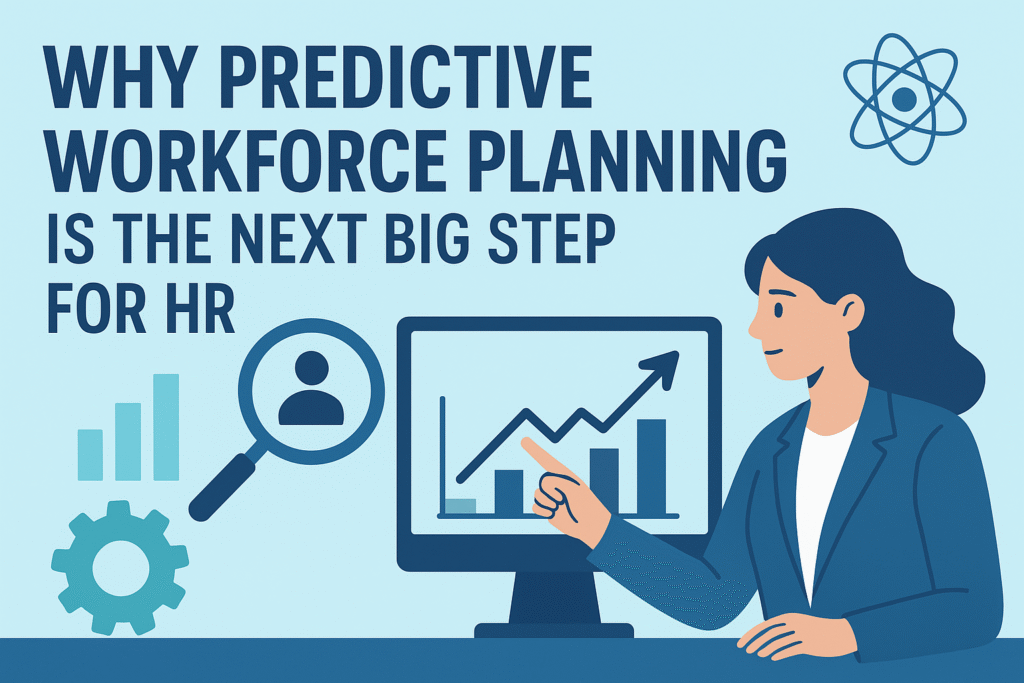Why Predictive Workforce Planning is the Next Big Step for HR
The HR role has changed radically. HR is no longer about hiring, payroll, and compliance; it is now a strategic business development partner. And in a world that changes so fast, the organizations that succeed are those that are able to see the challenges before they occur. That is where predictive workforce planning enters.
What Is Predictive Workforce Planning?
Predictive Workforce Planning (PWP) refers to the application of information and analytics to predict future workforce requirements. It extends the scope of the classic headcount planning to address such questions as:
- Which roles are likely to experience high turnover?
- Where will skill gaps appear in the next 6–12 months?
- How can hiring and training be optimized to meet business goals?
Instead of reacting to challenges, HR teams can proactively plan when, where, and how to deploy talent.

Why It Matters Today
Modern organization has never had to contend with greater challenges, as it has been changing rapidly due to technological advancement, increased employee demands, and skills gaps in essential areas. Predictive workforce planning assists the HR:
- Reduce Attrition Costs—By pinpointing employees who are likely to exit, HR will be able to act promptly to keep the best talent.
- Spot Skills Gaps Early -Predictive insights indicate where reskilling or upskilling is required before it is an issue.
- Plan Hiring Strategically—Organizations can match hiring to real business needs, rather than last-minute recruitment drives.
- Enhance Worker Engagement—Intensive learning, e.g., customized learning plans, mentoring, or professional development initiatives, is valuable.
How It Works
Predictive workforce planning relies on people analytics such as data from HR systems, performance reviews, engagement surveys, and even external labor market trends. Advanced algorithms identify patterns and predict future scenarios. For example:
- The evaluation of the scores in engagement surveys, tenure, and performance ratings could indicate which workers are at a substantial danger of quitting.
- The skills across teams can point to future gaps in key positions.
- Predictive models are able to suggest hiring, training, or redeploying employees to match the projected need.
Key Benefits for HR Leaders
- Strategic Decision-Making: HR becomes a business partner, not just an administrative function.
- Data-Driven Insights: Decisions are based on evidence, reducing bias and guesswork.
- Agility & Preparedness: Organizations can respond to market shifts, technology adoption, or sudden attrition faster.
- Better ROI on Talent Investments: Training, hiring, and retention efforts are more effective because they’re targeted.
Getting Started
- Audit Your HR Data – Ensure you have accurate, up-to-date employee information.
- Define Critical Roles and Skills – Identify positions essential to your strategy.
- Implement Analytics Tools – Use workforce analytics platforms or AI-enabled HR systems.
- Integrate Predictive Insights into Planning – Make predictions actionable by linking them to recruitment, training, and engagement strategies.
- Continuously Monitor and Refine – Predictive models improve over time as more data is collected.
The Bottom Line
Predictive workforce planning is more than a tech trend—it’s a strategic capability that separates proactive organizations from reactive ones. By anticipating attrition, forecasting skill gaps, and optimizing hiring, HR teams can drive growth, improve retention, and make employees feel valued.
In short, the future of HR is predictive. The organizations that embrace this approach today will be the ones ready for the challenges—and opportunities—of tomorrow.

